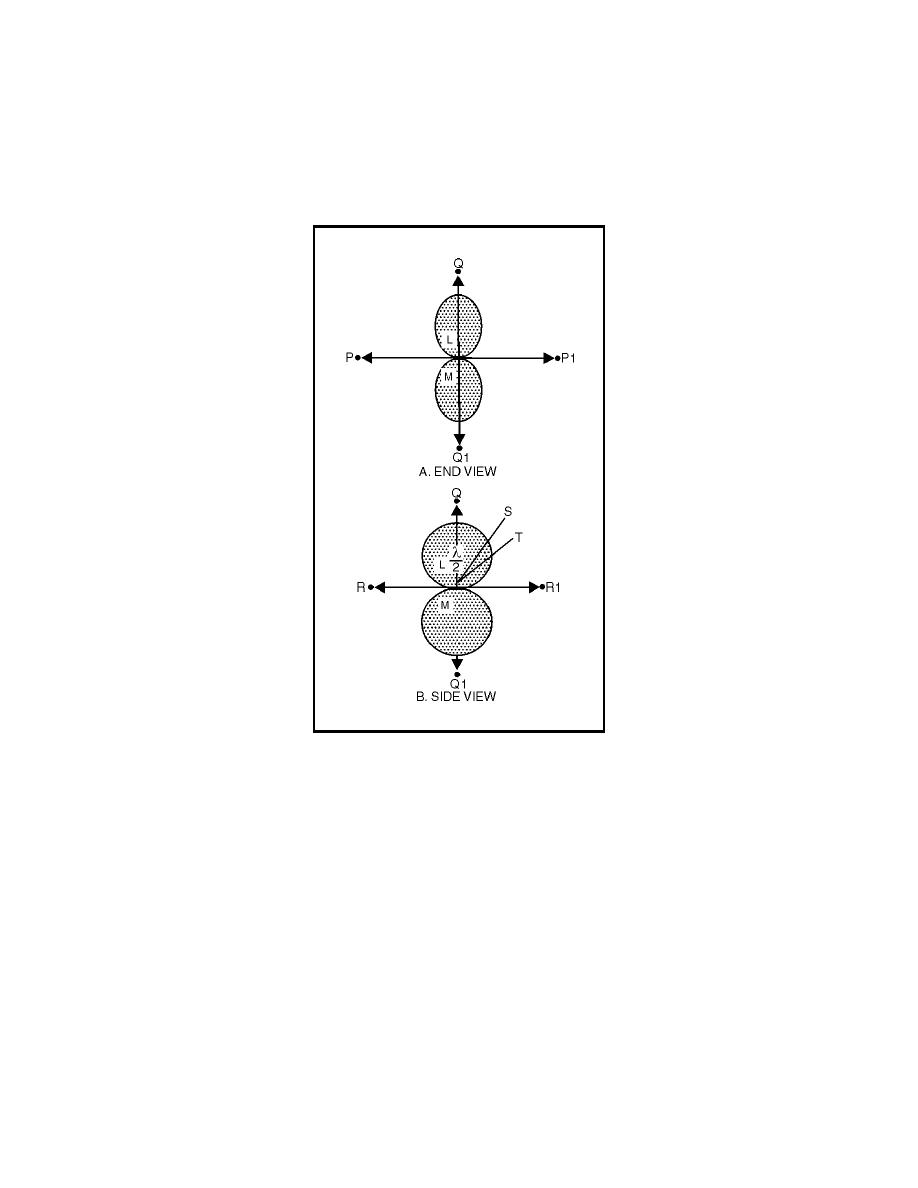
TC 9-64 _________________________________________________________________________
elements remain 180 degrees out of phase. In other words, maximum
cancellation takes place in the direction of P. The same condition is true for
the opposite direction (toward P1). The P to P1 axis is the line of least
radiation for the end-fire array.
Figure 4-30. Parallel Elements 180 Degrees Out of Phase
4-133. Consider what happens along the QQ1 axis. Energy radiating from
element M toward Q reaches element L in about one-half cycle (180 degrees)
after it leaves its source. Because element L was fed 180 degrees out of phase
with element M, the wavefronts are now in the same phase and are both
moving toward Q and reinforcing each other. Similar reinforcement occurs
along the same axis toward Q1. This simultaneous movement towards Q and
Q1 develops a bidirectional pattern. This is not always true in end-fire
operation. Another application of the end-fire principle is one in which the
elements are spaced one-quarter wavelength apart and phased 90 degrees
from each other to produce a unidirectional pattern.
4-134. In figure 4-30, view A, elements A and B are perpendicular to the
plane represented by the page; therefore, only the ends of the antennas
appear. In view B, the antennas are rotated a quarter of a circle in space
around the QQ1 axis so that they are seen in the plane of the elements
themselves. Therefore, the PP1 axis, now perpendicular to the page, is not
4-40



 Previous Page
Previous Page
